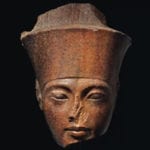 Technology
Technology  Technology
Technology  Humans
Humans 10 Everyday Human Behaviors That Are Actually Survival Instincts
 Animals
Animals 10 Animals That Humiliated and Harmed Historical Leaders
 History
History 10 Most Influential Protests in Modern History
 Creepy
Creepy 10 More Representations of Death from Myth, Legend, and Folktale
 Technology
Technology 10 Scientific Breakthroughs of 2025 That’ll Change Everything
 Our World
Our World 10 Ways Icelandic Culture Makes Other Countries Look Boring
 Misconceptions
Misconceptions 10 Common Misconceptions About the Victorian Era
 Mysteries
Mysteries 10 Strange Unexplained Mysteries of 2025
 Miscellaneous
Miscellaneous 10 of History’s Most Bell-Ringing Finishing Moves
 Technology
Technology Top 10 Everyday Tech Buzzwords That Hide a Darker Past
 Humans
Humans 10 Everyday Human Behaviors That Are Actually Survival Instincts
 Animals
Animals 10 Animals That Humiliated and Harmed Historical Leaders
Who's Behind Listverse?

Jamie Frater
Head Editor
Jamie founded Listverse due to an insatiable desire to share fascinating, obscure, and bizarre facts. He has been a guest speaker on numerous national radio and television stations and is a five time published author.
More About Us History
History 10 Most Influential Protests in Modern History
 Creepy
Creepy 10 More Representations of Death from Myth, Legend, and Folktale
 Technology
Technology 10 Scientific Breakthroughs of 2025 That’ll Change Everything
 Our World
Our World 10 Ways Icelandic Culture Makes Other Countries Look Boring
 Misconceptions
Misconceptions 10 Common Misconceptions About the Victorian Era
 Mysteries
Mysteries 10 Strange Unexplained Mysteries of 2025
 Miscellaneous
Miscellaneous 10 of History’s Most Bell-Ringing Finishing Moves
10 Controversial Depictions Of Jesus
Given how deeply held religious beliefs can be, it is understandable that depictions of figures of faith can be deeply powerful but also highly offensive. There are some religions that do not permit any image of certain prominent figures at all. Other faiths allow pictures as long as they fit into a certain traditional style.
As Jesus is such a central figure in Western culture, many artists, writers, and actors have wanted to use the image of Jesus to get their message across. As you might have guessed, their works weren’t always well-received. Here are ten depictions of Jesus that caused furor.
10 The Black Christ
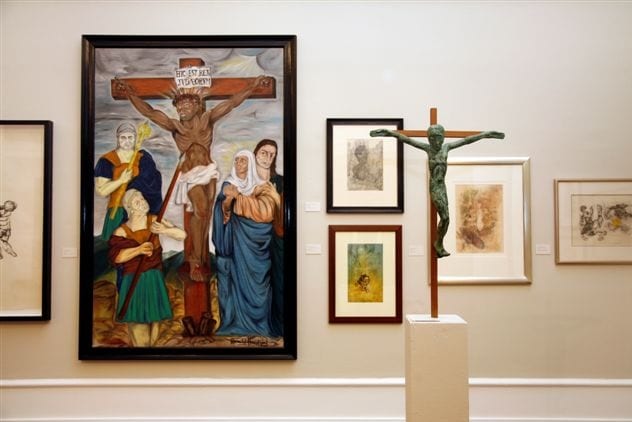
In 1962, South African artist Ronald Harrison unveiled a painting of Jesus at St. Luke’s Church in Cape Town. That may not seem like a controversial thing to do, but this particular painting showed the leader of the African National Congress, Albert Lutuli, in the place of the crucified Jesus. Tormenting him in the role of Roman soldiers were Hendrik Verwoerd, the creator of apartheid in South Africa, and his justice minister, John Vorster. For his struggle against apartheid, Lutuli had been awarded the Nobel Peace Prize in 1960 but was only allowed to leave the country to collect it after being given a ten-day release from a travel ban he had been placed under. The Black Christ caused an immediate uproar.
Once security forces became aware of the painting, it was smuggled from the country and toured Europe before being brought to the United Kingdom, where it remained until 1997.[1] With the painting out of reach, Harrison was arrested and tortured for seven days. Harrison later defended his use of the image of Jesus: “How could a government that professes to be Christian perpetrate such immoral deeds and inflict so much pain and suffering on its own countrymen simply because its supporters were of another race, another colour, and another creed?” When put back on display in 2007, the painting was once again met with hostility.
9 Ecce Homo
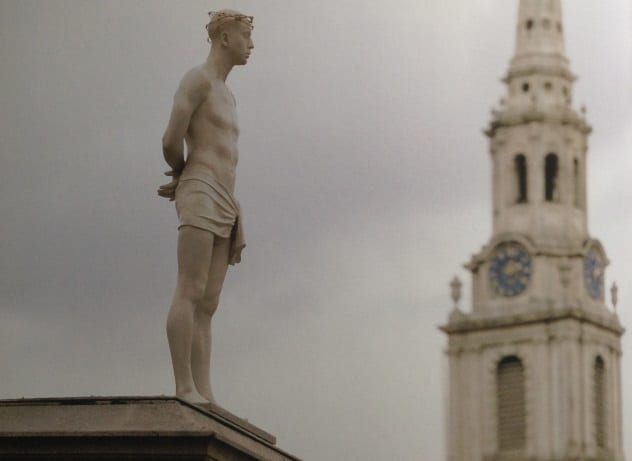
Trafalgar Square in the heart of London is a monumental testament to the imperial might of Britain in the past. Huge lions guard a pillar raised to the naval hero Lord Nelson. On three plinths are statues of other figures from the days of the empire, but curiously, the fourth plinth was left empty. In 1999, it was decided that artists would have the chance to put a statue on the plinth, and the first artist chosen was Mark Wallinger, who created a statue of Jesus.
Called Ecce Homo (Behold the Man), it is a simple image of a bound Jesus facing the crowd before His execution. Immediately, there was controversy about the statue. It was around 183 centimeters (6′) tall, and among the grandeur of the square, this made Jesus look small and vulnerable. One viewer said, “You couldn’t put your faith in someone like that, he’s weak as a kitten.”[2] Another said, “He’s a typically broken, lily-livered, Anglican Jesus.”
Surprisingly, criticism didn’t just come from the religious but from the art world as well. Sir Roy Strong said, “Only people totally ignorant of the square’s very definite theme could have chosen something so glaringly inappropriate.” Despite the shock of the human-sized statue, many came to love it and found it profoundly moving. The statue was later displayed at St. Paul’s Cathedral.
8 Jerry Springer—The Opera
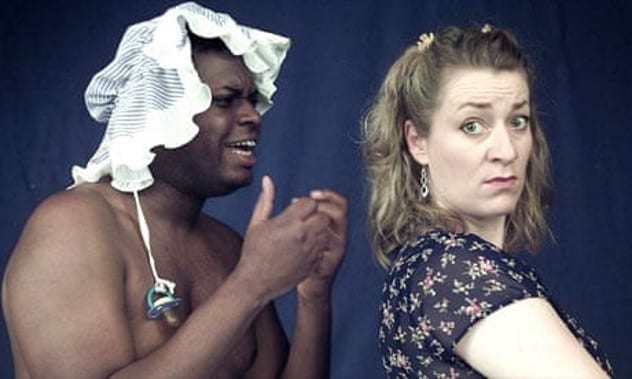
The Jerry Springer Show was never known for its tastefulness. It is perhaps not surprising that a comic opera based on it and featuring Jesus, Mary, and God would prove to be controversial. The opera follows Jerry Springer as he attempts to heal the rift between good and evil as he descends into Hell. Unfortunately, many people found the idea of Jesus and Jerry together simply too offensive. Many particularly disliked the fact that the actor who played Jesus in the third act also portrayed a man who dresses like a baby in the first act. Despite winning many awards when first brought to the stage in the UK, the opera was soon the target of protests.
The show’s greatest trial came when the BBC decided to film and show Jerry Springer—The Opera in 2005. Some 55,000 people complained to them, and legal cases were brought against the corporation.[3] When this failed to stop the opera from being broadcast, a private prosecution was launched against the head of the BBC, though this was also thrown out of court.
7 Last Supper
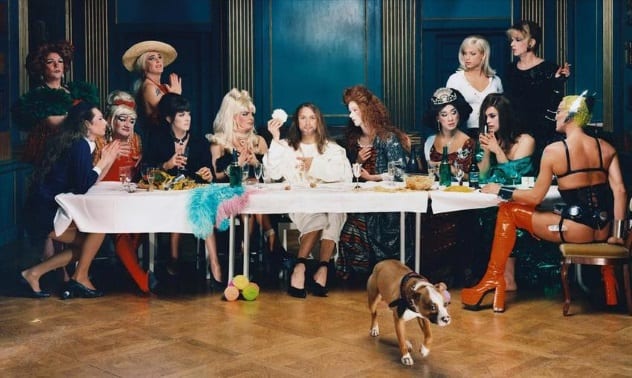
In 1989, Elisabeth Ohlson Wallin created a series of 12 photographs showing biblical scenes in a modern setting. This might have been novel but not provocative if she hadn’t used homosexual and transgender actors. In place of a traditional pieta scene of Mary holding the body of Jesus as He is brought down from the cross, she is seen holding a Jesus who has just died of AIDS in a hospital. The photo which was the focus of the controversy was Wallin’s Last Supper. Jesus is shown wearing high heels and sitting down to a meal with transgender and cross-dressing disciples.[4]
The photos were shown in Uppsala Cathedral and many other churches in Scandinavia but attracted immediate criticism. While many were in favor of the image of Jesus as a support for society’s outsiders, they could not see past the style of the photos. The artist received death threats for her work. Many galleries that have sought to display the images have been threatened with attack or protest.
6 One Nation Under God
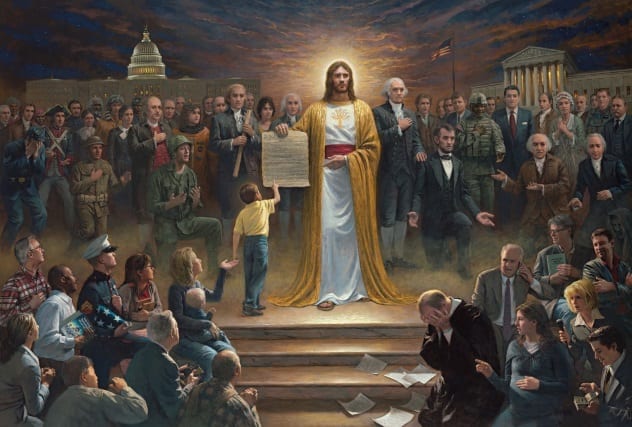
The separation of church and state is a pretty big deal in the United States, even if no one agrees quite how large that separation should be. So when Jon McNaughton painted One Nation Under God, he knew it would be controversial. In the painting, a Jesus in full glory is seen holding up the US Constitution and backed by great figures from America’s past.
Sitting on Jesus’s right at His feet are a collection of hopeful figures like mothers, teachers, children, and farmers. To Jesus’s left are those who have let down the promise of Jesus and the Constitution. These evil figures include such wicked people as Supreme Court judges, a journalist, a Hollywood type, and a professor holding a copy of The Origin of Species. Oh, and Satan is with them. It is not a subtle work of art.
One Nation Under God immediately sparked people to make fun of both the painting and the idea that it represented. Many of the proud American historical figures, such as Jefferson, had a hard time believing in Jesus as an active deity. Others mocked the trite message McNaughton was attempting to spread.[5] Luckily, parody versions are widely available.
5 The Last Temptation Of Christ
The Last Temptation of Christ was a film by Martin Scorsese which was released in 1988 to protests. The movie shows a Jesus who collaborates with the Romans in the crucifixion of Jews, has lustful thoughts, and is deeply human. Several large chains of cinemas in the United States refused to show the film. In New York, there were protests and counterprotests. People faced off with signs saying “Blasphemy” and “It’s only a movie.” Several countries banned the movie from being shown for several years, and a ban is still in place in the Philippines and Singapore.
In France, there were attacks on theaters showing the film. The worst was in Paris, where an incendiary device went off, causing a serious fire that hurt 13 people, four seriously.[6] The cinema was closed for several years for repairs. Other acts of violence were reported at other showings in France.
4 A Fire In My Belly
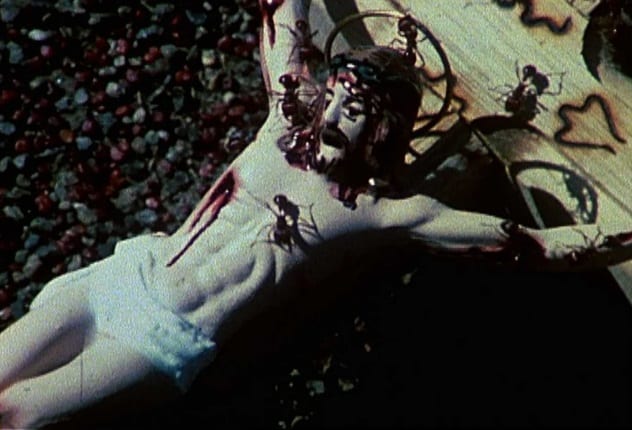
Video art does not usually make headlines, especially 20 years after it was produced. In 2010, however, David Wojnarowicz’s A Fire in My Belly was one of the most talked-about pieces of art in the United States. The Smithsonian had put on an exhibition at the National Portrait Gallery that included the 13-minute-long piece. Few people outside of the art world would have heard of it were it not for the anger that a section a few seconds long provoked. The scene in question showed a crucifix with ants crawling over it.[7]
For William Donahue of the Catholic League, this was too much. He declared the piece an act of hate speech against Christians. Various right-wing members of Congress joined the calls for the video to be removed from the exhibition. With their funding under threat, the Smithsonian did withdraw the artwork, causing a huge backlash against them from the art world. Other artists represented in the show tried to have their work pulled as well. In many respects, the act of censorship backfired, as an artwork that would have otherwise been little-known became world-famous.
3 Ecce Homo
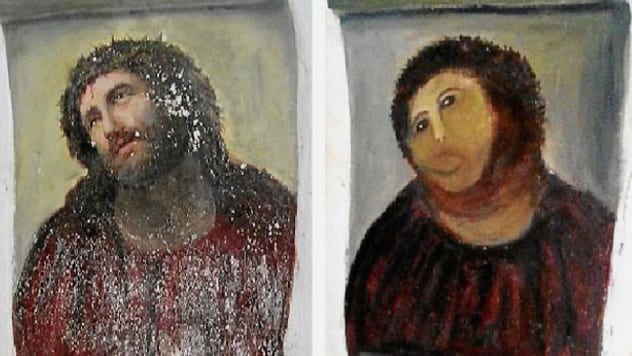
Not all controversial artworks have a provocative message that causes the storm that springs up around them. In 2012, a fresco of Jesus entered into popular culture for all the wrong reasons. The painting by Elias Garcia Martinez had sat in a church in Borja, Spain, without attracting any attention for decades. With the passing of time, the painting was suffering from flaking, so a devoted parishioner decided to give Jesus a facelift. The attempt by 81-year-old Cecilia Gimenez was so amateurish that police at first suspected vandalism. Soon, the Internet got hold of the comically restored fresco and dubbed it “Ecce Mono”—“Behold the Monkey.”
Cecilia Gimenez claimed that the parish priest knew she was attempting the restoration. Her work had an unintended side effect when it sparked a tourist boom in the town.[8] The church began to charge visitors to enter, and local businesses did a good trade in branded items.
2 Alexamenos Graffito
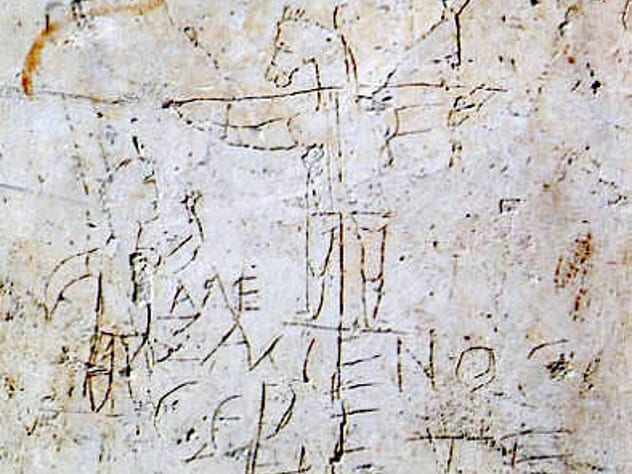
Artists depicting Jesus in an unflattering light is not a new phenomenon. In fact, what may be the earliest pictorial depiction of Jesus on the cross may also be one of the most offensive to believers. In a dig on the Palatine Hill in Rome, archaeologists discovered a piece of plaster with an image and writing carved on it. Above the text saying “Alexamenos worships his god” is the picture of a man kneeling beneath the figure of a crucified man—a man with the head of a donkey.[2]
The Alexamenos graffito, as the drawing became known, has been dated to around AD 200. We will never know who Alexamenos was, but we can work out what drove the artist to depict Jesus with an ass’s head. For the Romans, crucifixion was a humiliating death, and the idea of worshiping someone on a cross was ridiculous in itself. There were also rumors that the Christian god had the head of a donkey. The Roman scholar Fronto said, “The religion of the Christians is foolish, inasmuch as they worship a crucified man, and even the instrument itself of his punishment. They are said to worship the head of an ass.”
1 Piss Christ

What do you get if you mix a crucifix with a jar of your own urine? For Andres Serrano, he ended up with worldwide notoriety and a piece of art that has sold at auction for $277,000. The controversy-baiting title of the work is Immersion (Piss Christ). The work, created in 1987, is a photograph of the crucifix seen through the yellow tint of the artist’s bodily fluid.
Perhaps inevitably for a work called Piss Christ, the photograph has been dogged by controversy and protest. Senator Jesse Helms stated from the senate floor, “Serrano is not an artist. He is a jerk.” In 2011, when the photograph was on display in France, Catholic protestors attacked the picture with hammers.
Serrano responded:
The thing about the crucifix itself is that we treat it almost like a fashion accessory. When you see it, you’re not horrified by it at all, but what it represents is the crucifixion of a man. And for Christ to have been crucified and laid on the cross for three days where he not only bled to death, he shat himself and he peed himself to death. So if Piss Christ upsets you, maybe it’s a good thing to think about what happened on the cross.[10]
For more controversial art, check out 10 Controversial Portraits Of Heads Of State and Top 10 Controversial Statues Around The World.



